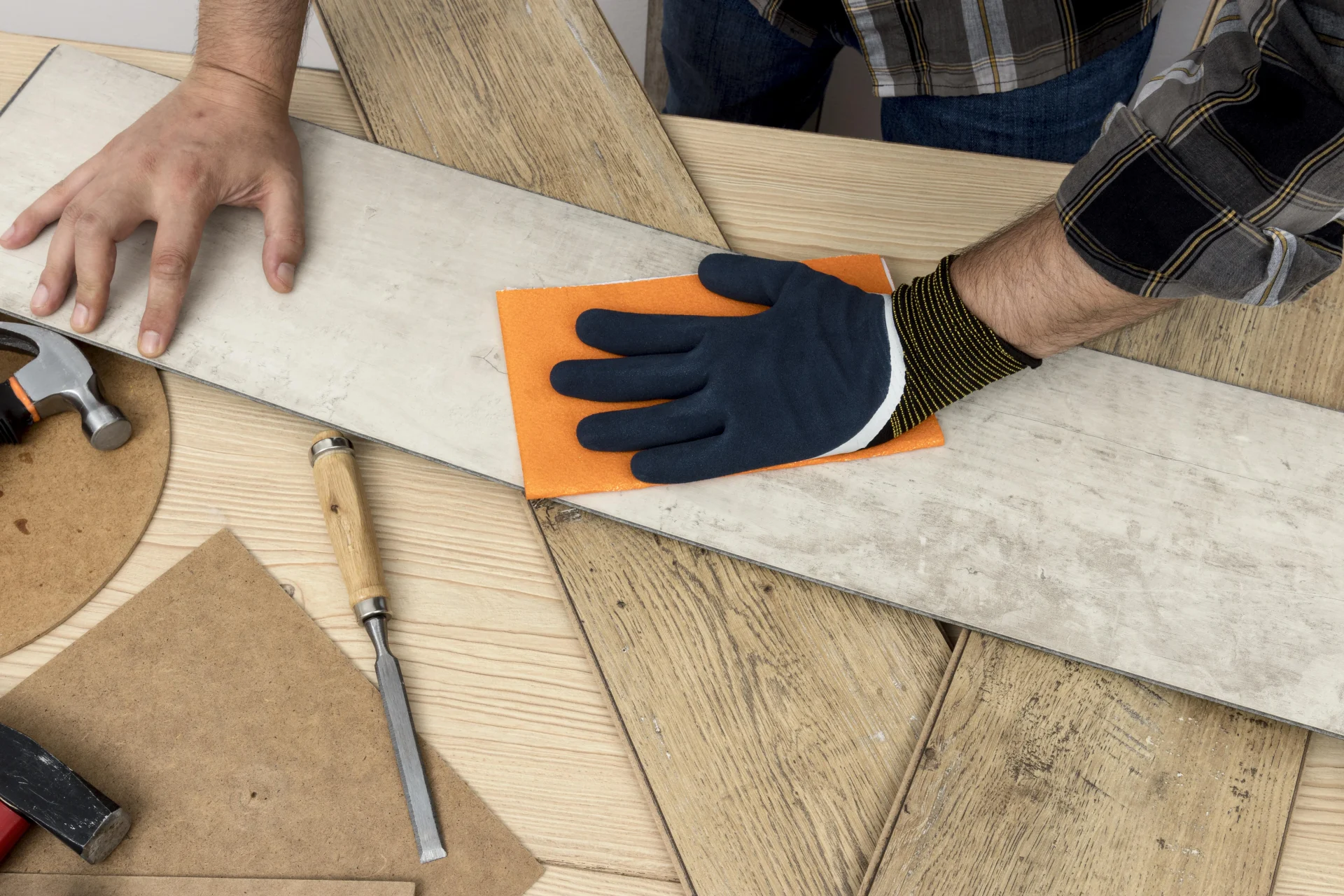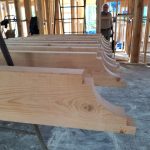
How to Prepare a Subfloor for Flawless Flooring Installation
Wondering what is the best way to prepare a subfloor for installation? You’re not alone. Subfloor preparation is one of the most critical steps in achieving a successful, long-lasting flooring project. Uneven or damaged subfloors can lead to squeaking, premature wear, and even shorten the lifespan of your new floors. The National Wood Flooring Association recommends addressing any fluctuations greater than 3/16 of an inch over a 10-foot span before installation. The good news? Learning what is the best way to prepare a subfloor for installation is simpler than it sounds—especially once you understand the right materials, tools, and techniques. Let’s walk through the essentials so you can approach your next flooring upgrade with confidence.
What is the best way to prepare a subfloor for installation: Step by step process
You want a base that supports your finished floor evenly and securely. A thorough approach usually includes:
- Removing any old floor covering or debris.
- Checking the subfloor for damage, warping, or loose spots.
- Ensuring moisture levels are within acceptable limits.
- Correcting high or low spots.
- Installing an underlayment or barrier, if needed, to handle moisture or sound control.
When you cover these steps properly, you eliminate many common headaches—like creaking, cupping, and uneven surfaces. This, in turn, can extend the life of your new floor by years.
Know your subfloor materials
Each has its own strengths, plus unique considerations for prep:
- Plywood
A top choice for flooring pros, plywood offers excellent dimensional stability and strength. Its layered structure resists warping from moderate moisture changes, making it ideal for renovations or new builds. It’s also easy to install. - Chipboard
Also known as particleboard, chipboard is a budget-friendly option. While affordable, it must be thick enough and well-supported by joists. If it sags, additional reinforcement is necessary. - Pine floorboards
Common in older homes, pine boards can work well if they’re solid, flat, and rot-free. For added stability, experts often recommend laying plywood over them before installing new flooring. - Concrete
Durable and common in modern builds, concrete slabs need strict moisture control. Always test humidity and use a damp-proof membrane before installing wood flooring. New concrete must fully cure—sometimes for weeks or months—before flooring is added.
Check structural and moisture conditions
Even the sturdiest material can fail if the subfloor is structurally compromised or too moist. During your inspection, pay attention to these:
Structural soundness
Check for loose boards, cracks, or flexing areas. Rot or damage may require panel replacement. Secure any loose subfloors to the joists to avoid squeaking. A firm, squeak-free base reduces future issues and meets the standard: “flat, dry, sound, and clean.
Moisture guidelines
Subfloors must meet moisture requirements. For wood, the moisture difference with the new floor should be no more than 4%. For concrete, emissions should stay below 3 lbs per 1,000 sq ft over 24 hours. Let new concrete fully dry and follow local codes or manufacturer testing standards.
Levelness
Uneven subfloors lead to warping or gaps. Sand or grind high spots, and fill dips with a leveling compound. Aim for no more than 3/16 inch variation over 10 feet. This simple fix prevents major flooring issues down the line.
Need help with prep? Review professional flooring prep guidelines or consult a local expert for region-specific advice.
Equip yourself with proper tools
Having the correct tools on hand can shave hours off your project and ensure a smooth subfloor. According to industry professionals, basic must-haves include:
Stainless steel smoother
Use this to spread patching or leveling materials evenly. It prevents ridges from forming.
Gauge rake
If you work with self-leveling compounds, a gauge rake cuts your spreading time dramatically by distributing material uniformly.
Spike roller
This penetrates freshly poured underlayment to remove air bubbles and allow the compound to settle evenly. Many rollers have spikes around 1¼ inches deep, helping break the surface tension.
Gunite shoes
These spiked shoes let you walk over wet or semi-dry compound without damaging it. This is a must if you are fixing any last-minute bubbles or distributing compound across the room.
Foam tape
This tape acts as a barrier in doorways or transitions, keeping the leveling product from flowing into unwanted areas. It also prevents direct contact with metal pipes, reducing corrosion risk.
Moisture barrier or underlayment
Some subfloor setups benefit from an additional layer that improves sound absorption or resists moisture. Choose one that suits your specific flooring material. You might explore different types of flooring installation materials to see what underlayment works best for your choice.
If you are uncertain which tools suit your subfloor, local suppliers or a flooring contractor can provide tailored product recommendations. Consult with them if you need specialized equipment or if your space contains unusual features like radiant heating.
Step-by-step preparation approach
Let’s focus on the core steps you should consider for an efficient subfloor preparation process. These steps give you a clear roadmap, from removing old flooring to verifying that your new floor is ready to go.
Remove existing materials
Start by taking out any carpet, tile, laminate, or old hardwood planks. Pull up tack strips or nails, and remove baseboards if needed. This step ensures you are working with a bare subfloor.
Clean thoroughly
A clean subfloor sets the stage for better adhesion. Sweep, vacuum, and remove all dust, debris, paint, or adhesive remnants. Any leftover residue can cause your new flooring to bubble or buckle over time. In older homes, you might also find staple pins or leftover screws. Remove or pound them in for a smooth surface.
Inspect and fix damage
Check for squeaks, soft spots, or cracks. If you find rotten wood or cracked sections of concrete, repair or replace them. Pine floorboards may need refastening. For severely compromised areas, it could be worth hiring a professional for a robust repair job.
Test moisture content
Use a moisture meter or arrange for an industry-approved test if you suspect high humidity, especially with concrete slabs. Wait until the subfloor meets the recommended moisture level for your specific flooring. New concrete can take 60 days or more to cure, so be patient.
Level the surface
Use a straightedge to spot high and low areas. Sand down ridges, and fill depressions with a suitable leveling compound. Follow package instructions, mix carefully, and use your gauge rake or smoother for consistent thickness. Spread a primer if recommended by the compound’s manufacturer.
Add underlayment (if required)
Depending on your chosen flooring, an underlayment can offer extra cushioning, moisture defense, or sound insulation. Some floors install directly over the subfloor, but many pros suggest underlayment for better results—especially for floating floors like laminate.
Acclimate and re-check
If you plan to install a wood-based floor, most manufacturers recommend acclimating the planks in the same room for a few days. This helps the wood adjust to local temperature and humidity. Finally, do a quick walk-through. Confirm that each step is done thoroughly before you begin the actual flooring installation. If you want more guidance, visit how to prepare your home for flooring installation for practical tips.
What is the best way to prepare a subfloor for installation
Ultimately, the best way to prepare a subfloor for installation revolves around meticulous inspection, proper repairs, and careful attention to moisture and leveling. You want to ensure every board or slab lies on a clean, sturdy foundation that will not shift or trap moisture. High or low spots, hidden debris, or untreated damage can lead to uneven wear and reduce your floor’s lifespan.
By systematically removing old coverings, fixing squeaks or rot, addressing moisture issues, and evening out surface contours, you create the perfect canvas for your new flooring. When you dedicate the right tools and enough time to subfloor prep, the installation becomes far smoother and your finished floor is more likely to stand the test of time.
Ready to Transform Your Home?
At Mazzamuto Construction, we believe great spaces start with thoughtful planning and skilled craftsmanship. Whether you’re exploring ideas or ready to build, our team is here to guide you every step of the way. Let’s bring your vision home—reach out for a personalized consultation today!
Frequently Asked Questions
1. How to prepare your home for flooring installation?
Start by removing all furniture, rugs, and decor from the room. If you’re replacing old flooring, arrange for removal and disposal ahead of time. Ensure there’s a clear path for installers, and cover nearby vents or fixtures to protect them from dust. Don’t forget to plan for pets and kids—they’ll need a safe space away from the work zone.
2.What should I do before installing new flooring?
Before installation, measure your space accurately, choose the right flooring type for your needs, and inspect the subfloor for any damage or uneven spots. Let your new flooring materials acclimate in the room for at least 48 hours to prevent warping or shifting later. Finally, thoroughly clean the area and make sure it’s completely dry and free of obstacles.
3. What is the best way to prepare a subfloor for installation?
First, remove any debris, nails, or adhesive from previous flooring. Then, check for flatness using a long level—uneven areas should be sanded down or filled in. Repair any cracks or damaged sections, and make sure the subfloor is dry, solid, and securely fastened. If you’re installing over concrete, a moisture barrier may be needed. A clean, stable subfloor is key to a long-lasting floor.
4. Should I remove my old flooring before preparing the subfloor?
Yes, you will get much better results if you remove the existing flooring and any remnants like nails or adhesives. This allows thorough cleaning and leveling of the subfloor, reducing the risk of hidden flaws.
5. Are DIY subfloor repairs safe, or should I hire a professional?
Simple fixes, like reattaching loose boards or applying leveling compound to small dips, can be DIY-friendly. Major structural or moisture issues may require professional help to ensure long-term stability.
Key takeaways
- A stable, level, and dry subfloor sets the stage for durable new flooring.
- Different materials (plywood, chipboard, pine, concrete) have unique challenges, so know your surface.
- Always check moisture levels, especially with concrete, to avoid future issues like mold or warping.
- Proper tools—such as spike rollers, gauge rakes, and foam tape—make subfloor prep faster and more precise.
- Take your time to repair, clean, and level the subfloor for an installation that lasts.




